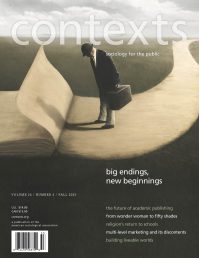
Determining what constitutes cultural appropriation is a contextual process, shaped by the act, the people involved, and the identity of the observers. iStockPhoto // vladans
crossing the cultural line
When does cultural appreciation become appropriation? A recent study published in the American Sociological Review offers a fresh look at this often misunderstood process.
To do so, sociologists Abraham Oshotse, Yael Berda, and Amir Goldberg applied an experimental design, known as a vignette experiment, to a large sample of over 2,500 participants. The authors provided stories describing one cultural group member engaging in a practice of another cultural group while altering the contextual information provided to participants. For example, in one vignette a White woman is noted for her love of wearing an Indian sari. For some participants, the White woman is described as affluent, while for others she is working-class. In another vignette, a male organizes a Mexican-themed Calavera Party. For some participants, he is White, for others, Black.
By controlling for the impact of particular sociodemographic factors, the authors found that cultural “trespassing” is most likely to be viewed as inappropriate when it devalues the host culture or is seen as being extractive to the benefit of the trespasser. Their findings show that the most offensive acts of boundary crossing are those in which a privileged group (e.g., Whites, males) adopts the practices of a disadvantaged one. Interestingly, though, it was those study participants most disenchanted with the possibility of upward social mobility who were most likely to take offense to any act of cultural boundary crossing.Amid public debates centered on what is and is not cultural appropriation, Oshotse, Berda, and Goldberg demonstrate the fallibility of any set of universal criteria. Instead, their account reveals how cultural appropriation is a contextual process, shaped by the nature of the act and the actors involved. Further, this research warns that inequality and status disillusionment create the conditions for increased cultural conflict.
